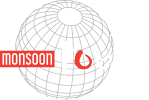Country & People
Cambodia covers an area of 181,040 km².
The country has about 16 million inhabitants (2016). Among them are 85-90% Khmer, 5% Vietnamese, 3% Cham (predominantly Muslim) and 1% Chinese. There are minor minorities of Thais, Laotians, as well as a number of mountain peoples, who were formerly called Moi and today are called Khmer Loeu. 93% of the population practices Theravada Buddhism.
The origin of the Khmer is not clear. The first great Khmer empire was the so-called Funan (1st to 6th century). From the 10th – 14th In the 16th century, the Angkorian empire of the Khmer stretched over the today’s Cambodia and included nearly the entire territory of today’s neighboring countries Thailand, Vietnam and Laos. After that the empire collapsed, its areas were increasingly divided between its large neighbors Siam (today’s Thailand) and Vietnam. In 1863, Cambodia signed a protectorate treaty with France, in order to escape the final liquidation by its two neighbors. In 1953 the country gained its independence. In 1970 it was involved in the Indochina war, the result of which was the cruel Pol Pot regime. Since 1993, Cambodia has once again become a constitutional monarchy. Since the end of the civil war in 1998, the country has been politically stable.
Climate
In the monsoon climate of Cambodia, temperatures throughout the year are high. They vary between 26 ° C (December) and 30 ° C (April). Rainfalls are determined by the monsoons; from May to September / October the humid southwest monsoon brings a lot of rain, in the remaining year northeast winds bring dry continental air. In most regions, however, even in the middle of the rainy season it is rarely raining for more than a few hours a day. Therefore, the country can be visited all year round.
Travel Advises
A tourist visa will be issued for (almost) all nations upon arrival for one month. The passport must be valid for at least 6 months. The visa fee is 30 US $. Visitors can also apply for a visa online (e-visa, www.evisa.gov.kh).
No proof of vaccination is required for entry. The usual protective inoculations should be done. In some regions there are malaria and dengue fever. Check with your tropical doctor.
During the day, the country is largely safe. Armed raids are rare, and take place mainly in the capital and after sunset. Overland travelling is not recommended after sunset, since the roads are not illuminated and there is danger of collision with humans as well as with cattle and wild animals.
The national currency is the Riel. 1 Euro is about 4,500 – 4,600 Riel. Payment in US dollars is accepted almost everywhere. In big cities Euro can be exchanged in US dollars. Most cities have ATMs, where foreign bank cards (also Maestro) can be used.
Cambodians are considered friendly, tolerant and helpful with foreigners. In the cities English is common among young people, even if only spoken with basic knowledge.
The Cambodian cuisine is very similar to the Thai, but comes with less spices.
Tip
… is unusual among the locals. Depending on the amount of the bill, half a dollar or more are welcome.
Prostitution
… is widespread in nearly all provinces and especially the capital Phnom Penh. The United Nations is reporting an HIV rate of 0.8% of the population.
Corruption
According to Transparency International (Corruption Perceptions Index 2015), Cambodia ranks 150 (from 167 countries). Tourists, however, are usually no target of corrupt officials.


